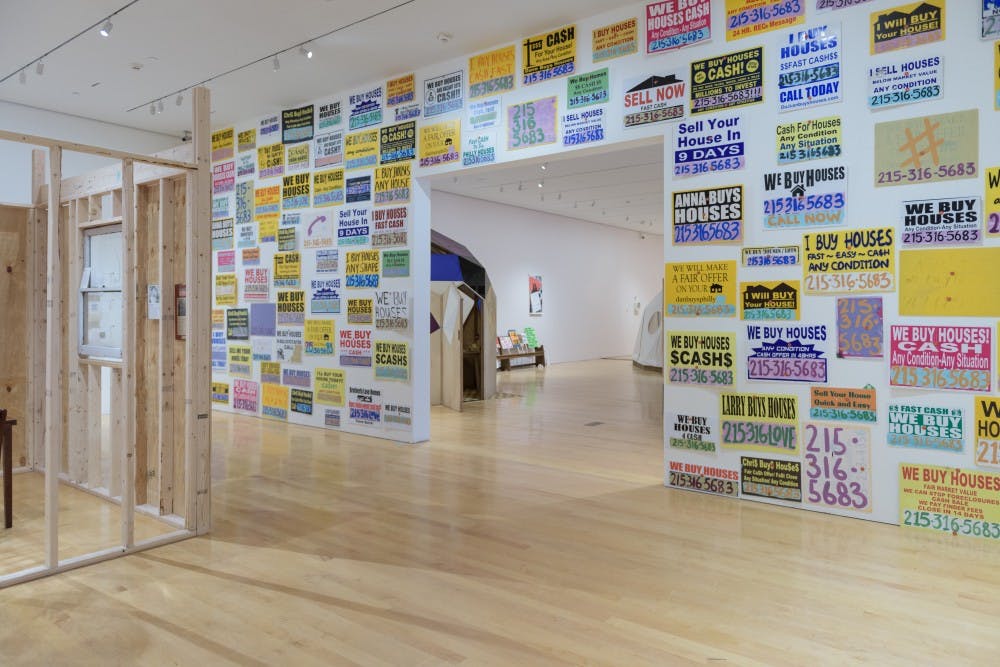Spread across the ground floor of Perelman Building (the one associated with Philadelphia Museum of Art) are five giant murals, each accompanied by a different word. Rise, Claim, Root, Care, and Move. This is Philadelphia Assembled, an exhibit that bridges art and civic engagement.

Photo by Joseph Hu
Initiated by artist Jeanne van Heeswijk, who led a team of over a hundred collaborators, Philadelphia Assembled tells the story of resilience in the face of regressive change. Each mural details some aspect of resistance. In one, it’s land sovereignty; in another, it’s economic autonomy. The murals are maps of Philadelphia with images, drawings, and diagrams to illustrate these issues.
At the bottom is a timeline of events in regards to these community problems on a local, national, and global scale, along with documented acts of resilience and resistance. From Christopher Columbus arriving to “the Indies” to Beyoncé winning the Peabody Award, the timeline recognizes the biggest and most trivial setbacks and achievements.

Photo by Joseph Hu
As a social engagement artist, Heeswijk was approached by the lead curator of the PMA to create a piece that would establish a relationship between an institution like the museum with the broader city. For her, the project “started as a series of conversations how we can collectively come together to imagine our city to think about acts of resilience and alternative ways of growth.” The entire piece culminated after over five hundred conversations across community institutions such as the Broad Street Church and public gardens.
Take a step further into the exhibit, and you will encounter a room full of objects under a letter of the alphabet. Called “Sovereignty A to Z,” this portion of the exhibit seeks to understand sovereignty through three different perspectives: personal, financial, and cultural. The use of the alphabet is intended to create a new language paradigm, to change the way we speak about sovereignty over ourselves and our surroundings every day.

Photo by Joseph Hu
Her main goal is to answer five questions surrounding reconstruction, sovereignty, sanctuary, futures, and movement. How does our written history reflect its realities? How is self–determination and unity defined? How do we provide safe spaces for all? What does our tomorrow look like and how do we shape it? How do we convey knowledge and information to do so?
The exhibit enables you to get out of the Penn Bubble, understand civic engagement in Philadelphia—its history, its current progression, and its future—and to learn about the social problems right under your nose.
Philadelphia Assembled will remain open until December 10, 2017. Admission is free with membership at the PMA and free every Wednesday night.







